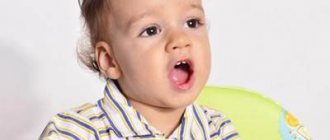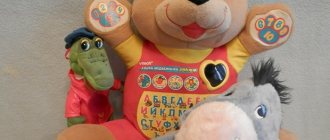Main types of speech and their characteristics
Below are the main types of speech and their characteristics.
Primary type of speech
Psychology divides human speech activity into two categories: internal and external.
Internal
It is associated with the thinking process, is not formalized orally or in writing, and is not a means of communication. It is figurative, fragmentary, it involves only words that convey the essence of the thought, so the speed of transmission is fast.
Inner speech performs an important preparatory function before the actual voicing of thoughts; thanks to it, “outlines” of statements are compiled.
External
Associated with the process of communication: spoken, written or read. Subtypes of external speech are oral and written.
Written
Formatted using written characters in compliance with grammatical rules. A clear construction of phrases, a thoughtful presentation of thoughts, and coherence of the resulting text are required. Written speech includes both writing itself and reading.
Conversational (dialogue)
A type of oral speech in which a conversation is carried on by two people, using simple phrases and turns of phrase. Does not require detailed expressions and is easily understood by the interlocutor.
Monologue
Refers to oral form, pronounced by one person.
Example: speech by a lecturer, speaker.
A monologue is close to written speech, due to the lack of feedback from the interlocutor. Compliance with the same rules as when writing is required: consistent mental presentation, logic, and the ability to coherently convey information. A monologue is considered a more complex type of speech than dialogue; it involves contact with the audience and requires preparation.
Schematic explanation of speech structure.
Thus, answering the question “What type of speech is primary in the development of a child’s speech activity?”, we can definitely talk about the oral conversational form. It is genetically primary: first, the child masters dialogue (from infancy through interaction with adults). And only then does he learn to organize thoughts in a monologue and writing. To prove the thesis, one can cite the fact that there are still languages and dialects that function only through oral communication. Oral speech is natural in nature, written language is its derivative.
Interesting fact! A large group of people for whom the main form of communication is neither oral nor written speech is the deaf and mute, who do not have hearing or voice from birth, or who have lost them as a result of accidents. For them, the main type of information transfer remains kinetics - gestures, signs. Historically, kinetic speech is the primary type of communication that has existed since ancient times. But, of course, it is not worth comparing the communications of the deaf and dumb with the way of communication of primitive people. The speech of mutes is characterized by complexity and systematization of signs and concepts.
Development of a child’s speech forms in a preschool educational institution
Kindergarten is the place where the development of a child’s personality begins. The professional competence of teachers plays a huge role in this process. The development of coherent speech in the form of constructing dialogues and monologues, laying the prerequisites for writing is one of the primary tasks of a preschool educational institution.
Features of speech development in children of senior preschool age
It is important to understand! This is not a narrowly focused activity, but a whole range of measures taken by specialists, requiring creative solutions. A modern approach to working and teaching both children and teachers themselves is important.
To date, the Federal State Standard of Preschool Education (FSES DO) has been developed and introduced, which identifies the main areas of child development:
- Social and communicative development,
- Cognitive,
- Speech development,
- Artistic and aesthetic,
- Physical.
Educational field "Speech development" according to the Federal State Educational Standard for Education
This standard implies competent work by specialists to help children master the following areas:
- Free expression of thoughts and feelings to establish contact with other children and adults.
- Replenishment of vocabulary, the ability to combine words into sentences, change the form of words, i.e. mastering the grammatical structure.
- Development of creativity, the ability to compose short stories, think through the plots of fairy tales.
- Mastering the stress system, correct pronunciation of sounds, the ability to speak expressively and read poetry.
- Studying letters, word morphology, syntactic rules, preparing for literacy, mastering the basics of writing.
- Gaining experience in reading books.
Psychological features of speech development in preschool children November 2021
Psychological features of speech development in preschool children
Preschool age is a period of active acquisition of spoken language by a child, the formation and development of all aspects of speech. The sooner learning the native language begins, the more freely the child will use it in the future.
In preschool children, speech has an important influence on the development of sensations and perceptions and contributes to the formation of thinking. Thanks to speech, ideas about the world around us develop and memory improves.
As the lexico-grammatical side of speech develops, the child masters such intellectual operations as comparison, analysis and synthesis.
Speech is one of the indicators of child development. Speech accompanies all types of activity.
It fulfills several needs of the child: communicative, informative, cognitive (developmental), which already speaks of its great significance.
The primary function of speech is communicative. Without the development of speech, full communication of a person in society is impossible. Language development is at the center of a child's learning.
Work on the development of children's speech must be comprehensive and solve problems associated with all aspects of speech development - phonemic, lexical, grammatical. A comprehensive influence on a child’s speech is a prerequisite for the development of coherent speech. In addition, it is the adult who awakens the child’s interest in language and encourages him to be creative.
Timely and complete development of speech in preschool age is one of the main conditions for the normal development of a child and his subsequent successful education at school. Modern means started from the first days of a child’s life. Comprehensive means a sufficient amount of language material, encouraging the child to master speech to the best of his ability at each age level.
Any delay and any disturbance in the development of a child’s speech is reflected in his behavior, as well as his activity in its various forms.
Speech is not an innate ability, but develops in the process of ontogenesis (individual development of the body from the moment of its inception to the end of life.) in parallel with the physical and mental development of the child and serves as an indicator of his overall development. A child’s acquisition of his native language follows a strict pattern and is characterized by a number of features common to all children. In order to understand speech pathology, it is necessary to clearly understand the entire path of sequential speech development of children in normal conditions, to know the patterns of this process and the conditions on which its successful occurrence depends.
In addition, you need to clearly imagine each stage of the child’s speech development, each “qualitative leap” in order to notice in time certain deviations in this process. For example, a baby is 1 year 4 months. doesn't speak yet. The teacher can decide whether this phenomenon is normal or not only if he knows when, during normal development, the first words should appear.
Knowledge of the patterns of speech development in children is also necessary for the correct diagnosis of speech disorders. Thus, some experts sometimes refer three-year-old children to a speech therapist to eliminate deficiencies in the pronunciation of sounds. Is it correct? No. Because even with normal speech development, a child at a given age is “supposed” to pronounce some sounds incorrectly. This phenomenon, called physiological tongue-tiedness, is completely natural and is due to the still insufficient formation of the articulatory apparatus.
And finally, knowledge of the laws of development of children’s speech in the process of ontogenesis is also necessary in order to correctly construct all correctional and educational work to overcome speech pathology. For example, when teaching non-speaking children (alaliks), it is very important to know that first every child develops an understanding of speech and only then does he master active speech. Consequently, if in this case you immediately develop active speech, the work will not bring the desired effect.
A. N. Leontyev establishes four stages in the development of children’s speech:
1st - preparatory - up to one year;
2nd - pre-preschool stage of initial language acquisition - up to 3 years;
3rd - preschool - up to 7 years;
4th - school.
Let us dwell in detail on the characteristics of these stages.
So, the first stage is preparatory (from the moment the child is born to one year).
Why is this stage called this? Because at this time preparation for mastering speech occurs. What is it?
From the moment of birth, the child develops vocal reactions: screaming and crying. True, they are still very far from the sounds of human speech. However, both screaming and crying contribute to the development of subtle and varied movements of the three sections of the speech apparatus: respiratory, vocal, articulatory.
After two weeks, you can already notice that the child begins to respond to the speaker’s voice: he stops crying, listens when he is addressed. By the end of the first month, he can already be calmed down with a melodic song (lullaby). Next, he begins to turn his head towards the speaker or follow him with his eyes. Soon the baby already reacts to intonation: to a gentle one he becomes animated, to a harsh one he cries.
About 2 months humming appears and by the beginning of the 3rd month. - babble (agu-huh, cha-cha, ba-ba, etc.). Babbling is a combination of sounds that are vaguely articulated.
From 5 months the child hears sounds, sees articulatory movements of the lips of others and tries to imitate. Repeated repetition of a specific movement leads to consolidation of a motor skill.
From 6 months The child pronounces individual syllables by imitation (ma-ma-ma, ba-ba-ba, cha-cha-cha, pa-pa-pa, etc.).
Subsequently, through imitation, the child gradually adopts all the elements of spoken speech: not only phonemes, but also tone, tempo, rhythm, melody, intonation.
In the second half of the year, the baby perceives certain sound combinations and associates them with objects or actions (tick-tock, give-give, bang). But at this time he still reacts to the entire complex of influences: the situation, intonation and words. All this helps the formation of temporary connections (memorizing words and reacting to them).
At the age of 7 - 9 months. the child begins to repeat more and more diverse combinations of sounds after the adult.
From 10 - 11 months. reactions to the words themselves appear (regardless of the situation and intonation of the speaker).
At this time, the conditions in which the child’s speech is formed (correct speech of others, imitation of adults, etc.) become especially important.
By the end of the first year of life, the first words appear.
The second stage is pre-preschool (from 1 year to 3 years).
With the appearance of the child’s first words, the preparatory stage ends and the stage of development of active speech begins. At this time, the child develops special attention to the articulation of those around him. He very much and willingly repeats after the speaker and pronounces the words himself. At the same time, the baby confuses sounds, rearranges them, distorts them, and omits them.
The child’s first words are of a generalized semantic nature. With the same word or sound combination it can denote an object, a request, or feelings.
- For example, the word porridge can mean porridge at different moments; give me some porridge; hot porridge.
- Or the word papa can mean papa came; no dad; dad, come over, etc.
It is possible to understand a child only in a situation in which or about which his communication with an adult takes place. Therefore, such speech is called situational. The child accompanies situational speech with gestures and facial expressions.
From the age of one and a half years, the word acquires a generalized character. It becomes possible to understand an adult’s verbal explanation, assimilate knowledge, and accumulate new words.
During the 2nd and 3rd years of life, the child experiences a significant accumulation of vocabulary.
It should be noted that various researchers (both ours, domestic and foreign) provide different quantitative data on the growth of children’s vocabulary.
Let us present the most common data on the rapid development of children's vocabulary in the preschool period: by 1 year 6 months. - 10 - 15 words; by the end of the 2nd year - 300 words (in 6 months about 300 words!); by year 3 - about 1000 words (i.e. about 700 words per year!).
The meanings of words become more and more defined.
By the beginning of the 3rd year of life, the grammatical structure of speech begins to form in the child.
First, the child expresses his desires and requests in one word. Then - in primitive phrases without agreement (“Mom, give Tata something to drink” - Mom, let Tata drink some milk). Next, elements of coordination and subordination of words in the sentence gradually appear.
The third stage is preschool (from 3 to 7 years).
At the preschool stage, most children still have incorrect sound pronunciation. You can detect defects in the pronunciation of whistling, hissing, sonorant sounds r and l, and less often - defects in softening, voicing and iotation.
Over the period from 3 to 7 years, the child increasingly develops the skill of auditory control over his own pronunciation, the ability to correct it in some possible cases. In other words, phonemic perception is formed.
During this period, the rapid increase in vocabulary continues. By the age of 4–6 years, a child’s active vocabulary reaches 3000–4000 words. The meanings of words are further clarified and enriched in many ways. But often children still misunderstand or use words, for example, by analogy with the purpose of objects, they say “pour” instead of watering from a watering can, “dig” instead of a shovel, etc. At the same time, this phenomenon indicates a “sense of language.” This means that the child’s experience of verbal communication grows and on its basis a sense of language and the ability to create words are formed.
K. D. Ushinsky attached special importance to the sense of language, which, according to him, tells the child the place of emphasis in a word, grammatical expression, and the way of combining words in a sentence.
In parallel with the development of vocabulary, the development of the grammatical structure of speech also occurs. During the preschool period, children master coherent speech. After three years, the content of the child’s speech becomes significantly more complex and its volume increases. Children of the 4th year of life use simple and complex sentences in speech. The most common form of statements at this age is a simple common sentence (“I dressed the doll in such a beautiful dress”; “I will become a big strong uncle”).
At the age of 4-5 years, when the child already has a good command of speech and can talk with an adult on abstract topics, non-situational-cognitive communication becomes possible. The child acquires a sufficient vocabulary and begins to construct phrases grammatically correctly and pronounce sounds normally. The active vocabulary that a child has at the age of 4 gives him the opportunity to freely communicate with others. But he often experiences difficulties due to the insufficiency and poverty of the vocabulary when he needs to convey an event in which he himself was a participant. Here the baby often makes inaccuracies. In the process of mastering new words, the child not only memorizes them, he begins to comprehend their sound side, tries to establish a closer connection between the object and the word denoting it, strives in his own way to understand the names of certain objects, actions, i.e. The child develops a motivated attitude towards vocabulary. At this age, the child is not yet able to independently talk logically, coherently and clearly for others about the events he witnessed; he cannot intelligently retell the content of a fairy tale or story read to him. His speech is still situational. The child’s utterances consist of simple common sentences, often only distantly related in content. It is not always possible to understand their content without additional questions. There is still no development in the utterance that is characteristic of monologue speech.
At 5 years of age, children are relatively fluent in using the structure of compound and complex sentences (“Then, when we went home, they gave us gifts: various candies, apples, oranges”; “Some smart and cunning guy bought balloons, made candles, threw into the sky, and it turned out to be a fireworks display").
Starting at this age, children's statements resemble a short story. During conversations, their answers to questions include more and more sentences.
At the age of five, children, without additional questions, compose a retelling of a fairy tale (story) of 40 - 50 sentences, which indicates success in mastering one of the difficult types of speech - monologue speech.
During this period, phonemic perception improves significantly: first, the child begins to differentiate vowels and consonants, then soft and hard consonants, and finally, sonorant, hissing and whistling sounds.
By the age of 4, a child should normally differentiate all sounds.
that is, he must have developed phonemic perception.
By this time, the formation of correct sound pronunciation ends and the child speaks completely clearly.
During the preschool period, contextual (abstract, generalized, devoid of visual support) speech is gradually formed. Contextual speech appears first when the child retells fairy tales and stories, then when describing some events from his personal experience, his own experiences, impressions.
Having a good memory, a child is able to remember and reproduce short poems, and after listening to the same fairy tale repeatedly, he can convey its content almost word for word, often without even understanding the meaning of the words.
Normal (timely and correct) speech development of a child allows him to constantly learn new concepts, expand his stock of knowledge and ideas about the environment. Thus, speech and its development are most closely related to the development of thinking.
Thus, preschool childhood is a period of intensive development of communicative forms and functions of language activity, practical speech skills, and awareness of speech activity.
The following types of disorders occur in preschool age:
— DYSPHONIA / APHONIA / - absence or disorder of phonation due to pathological changes in the vocal apparatus. They manifest themselves in the absence or violation of the strength, pitch, and timbre of the voice.
— BRADYLALIA is a pathologically slow rate of speech.
- TACHILALIA - pathologically accelerated rate of speech.
— STUTTERING is a violation of the tempo-rhythmic organization of speech, caused by the convulsive state of the muscles of the speech apparatus.
-DYSLALIA is a violation of sound pronunciation with normal hearing and intact innervation of the speech apparatus.
— DYSARTHRIA - a violation of sound pronunciation caused by insufficient innervation of the speech apparatus. (organic)
— RINOLALIA - a violation of sound pronunciation and timbre of the voice, caused by anatomical and physiological defects of the speech apparatus.
- ALALIA - absence or underdevelopment of speech due to organic damage to the cerebral cortex in prenatal or early periods of development.
— DELAYED SPEECH DEVELOPMENT (RDD) - the slowest rate of mastery of the native language compared to the norm.
— PHONETIC-PHONEMATIC UNDERDEVELOPMENT (FFN) is a violation of the processes of formation of the pronunciation aspect of the native language in children with various speech disorders associated with defects in the perception and pronunciation of sounds.
— GENERAL SPEECH IMPORTANCE (GND) is a complex speech disorder in which children have impaired formation of all components of speech (vocabulary, grammar, phonetics, semantics) with normal hearing and intelligence.
Each group of defects differs in form and degree of severity. The nature of correctional work, forms and methods, as well as timing depend on this.
It is also necessary to touch upon such an important element as the prevention of speech disorders. If it is not carried out, then transitions of certain disorders to written speech (DYGRAPHIA, DYSLEXIA) or layering of secondary disorders on primary ones are possible. And this is an even more complex correction process. Therefore, it is advisable to eliminate all speech disorders in preschool age.
Methods for examining the speech of preschool children
Diagnosis of speech development in children of early and preschool age is carried out according to the following parameters:
- Child's dictionary.
- Sound culture of speech.
- Grammar.
- Development of coherent speech.
Used literature on the topic: Gribova O. E., Bessonova T. P. “Didactic material on examining children’s speech”
Specialists should evaluate a child's skills only using appropriate diagnostic materials that help them objectively approach the assessment of children's speech abilities. To select instruments and examination technologies, it is recommended to use the methodological literature of Gribov and Bessonov “Didactic material for examining children’s speech.”
It is presented in three directions:
- "Lexicon",
- "Grammar structure"
- “Sound Side” part 1, part 2.
Survey of the sound culture of children's speech
The concept of “sound side” refers to sound pronunciation. Diagnosis of the sound culture of speech of preschoolers should be carried out by a speech therapist twice a year: in the fall - when drawing up a plan for correctional work, and in the spring - when summing up the results.
Important! During the study of sound pronunciations, the teacher should note the following indicators: which sounds were pronounced correctly, whether there are violations of the syllabic structure of words, whether the child can regulate the strength of the voice, tempo, whether there were any omissions in sound pronunciation correction, active or passive speech activity.
Methods for developing coherent speech
There are several methods for developing coherent speech, they are described below.
Modern educational technologies
The development of coherent speech in preschool children means the improvement of dialogic and monologue speech forms. To do this, teachers must integrate the following technologies into their work:
- Game (speech exercises, communication exercises, games for fine motor skills, role-playing games, etc.).
- ICT.
- Mnemonics.
A complex of articulatory gymnastics in kindergarten for children 3-4 years old
Mnemonics as a technique for developing coherent speech in preschoolers
Mnemonics is a technique that makes it easier to memorize words by forming associations. In mnemonics, information that is difficult for a child to understand must be replaced with a visual image. This technique promotes the development of imagination, visual memory, and associative thinking.
Important! In the development of coherent speech in preschoolers, specialists are required to use mnemonic tables.
Analysis map of GCD for speech development in preschool educational institutions according to the Federal State Educational Standard
The key to the successful development of a child’s speech culture lies in the correct planning and conduct of direct educational activities (DEA). To do this, teachers should keep GCD analysis cards with a pre-drawn up work plan, taking into account the specifics of children’s speech problems, identifying methods for their correction, and drawing up explanatory recommendations for working with children, including for parents.
Consultations for parents in kindergarten on speech development
The educational work carried out by teachers is an important, but not the only aspect on which the success of a child’s speech development depends. The family rightfully plays a decisive role in shaping the child’s speech behavior. It is important to unite the efforts of teachers and parents, timely consultations and joint solutions to problems.
Parents and teachers have at their disposal a universal tool for both the primary and subsequent speech development of children: folklore.
Folklore as a means of speech development for preschool children
Oral folk art helps to master rich, figurative, logically structured speech.
Round dances, tongue twisters, proverbs and sayings, nursery rhymes, riddles, epics, lullabies, fairy tales - all this is not only possible, but should be used in interaction with the child by both parents and teachers.
It is important to understand! Folklore expands vocabulary, increases the level of coherence, develops imagination and logic.
The main condition for the development of a child’s speech without delays
For a child, a deep emotional connection with loved ones is of great importance. In order for him to speak more quickly, you need to ensure:
- Regular communication with an adult . It helps maintain a child’s state of relaxation, inner comfort, and freedom. The baby involuntarily makes sounds, as if responding to an adult. Over time, sounds turn into words, and then into sentences.
- An adult's interest in communicating with a child . When an adult listens carefully to a child and shows interest in him, the baby sees this concentration and learns to listen to other people. Observing the articulation (movement of the lips, jaw and tongue) of an adult while speaking helps the child also develop articulation and encourages him to pronounce sounds and words.
For a child’s speech development, emotional closeness and constant communication with an adult are important.
Does every speech that a child hears help him speak faster ? To find out the answer to this question, outstanding Soviet psychologists V.V. Vetrova and M.I. Lisina conducted an experiment. Children aged 10–15 months were divided into two groups. The first group was given a tape recording with an excerpt from a children's radio program to listen to, while an adult was with them - he also listened to the recording, but did not speak to the kids. The second group was not given anything to listen to.
After 20–30 sessions of listening to the recordings by the children of the first group, psychologists noted that their babbling had noticeably intensified and become more frequent, while that of the children of the second group did not. From this they concluded that it is very important for a child to hear human speech at an early age in order to quickly learn to speak.
Then another question arose: did the babbling of the children of the first group develop so actively in connection with the presence of an adult, or was it enough for the kids to simply hear human speech from a tape recorder?
In search of an answer, the experiment was continued, and the children of the first group were divided into two more subgroups. The first to include audio recordings of human speech, without an adult in the room with them. The second subgroup listened to music, already in the presence of an adult.
Sessions when human speech was heard from a tape recorder, but an adult was absent, turned out to be useless. The babbling did not increase. The children were looking for an adult, but did not listen to the speech. Sessions where music was listened to in the presence of an adult also did not lead to noticeable results. The children were mainly looking for the source of the sound, but they were not interested in communication.
Scientists have concluded : for the development of speech in a child, the presence of an adult is necessary, and it is imperative that he speaks to the baby. Simply hearing speech is not enough to start speaking. We need an adult - a living source of speech who establishes an emotional connection with the child and communicates with him.
It is the adult who introduces children to the world of speech. Thanks to him, the child develops not only the ability to speak, but also the ability to listen, as well as the skill of influencing another person through speech.








